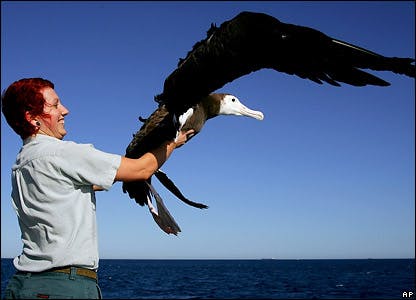Creating a rating of the largest birds turned out to be not so simple. What criterion should be the basis? Height? Weight? Wingspan? The problem is that there are tall but thin birds, or small but well-fed ones; those with giant wingspans but light, or, worse, large and heavy birds that cannot fly or are very beautiful. In this article, attempts have been made to create a top list, taking into account all these parameters.
1Ostrich
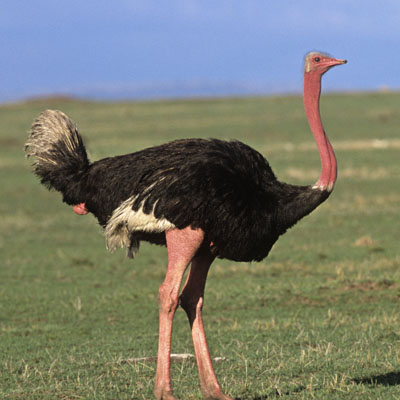
Of course, the first place in the rating can only go to the ostrich, the largest non-flying bird. It reaches a height of 2.7 meters and weighs 130 kg. It’s no wonder that it cannot lift such weight into the air, but it can run fast, reaching speeds of up to 70 km/h. The ostrich is not only interesting for its size but also for having the largest eyes in the animal kingdom, and their weight exceeds that of the ostrich’s brain. It’s quite possible that the bird sees better than it thinks. Although, why think if you can run fast?
2Cassowary

The cassowary is the largest bird in Australia and New Guinea and the second-largest in the world. With a height of 2 meters and a weight of 60 kg, it cannot fly but compensates for this by being able to reach speeds of up to 50 km/h. This name, with Papuan roots meaning “horned head,” was given to the bird due to the growth on its forehead, which is now called a helmet.
3Albatross
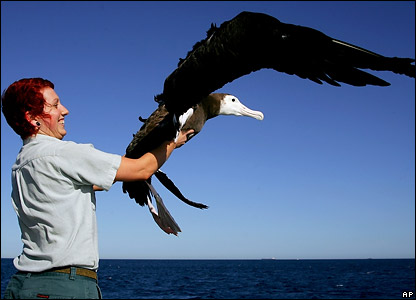
The wandering albatross, a resident of the southern seas, is considered the largest flying bird. Although the size of their bodies is not very impressive, their wingspan is truly enormous, reaching 3.7 meters. In addition, albatrosses are a bad omen for superstitious sailors who believe that the appearance of these birds predicts a storm.
4Swan

It is impossible not to mention graceful migratory beauties – swans, which, during particularly good fishing times, can weigh up to 15 kg. Their wingspan is also impressive – 2 meters or more.
5Black Vulture

The black vulture, with a wingspan of up to 2.5 meters and a height of 120-135 cm, primarily inhabits mountainous regions of Southern Europe, Northern Africa, the Middle East, and Central Asia. The main part of this bird’s diet consists of carrion, which it locates while soaring in the air. Due to the vultures’ very weak legs, they are incapable of carrying off prey, so they have to consume large amounts of food right where they find it. Sometimes, they eat up to 14 kg.
6Dalmatian Pelican
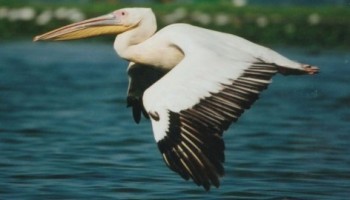
Dalmatian pelicans are one of the largest waterfowl. Adult individuals can reach 180 cm (including a nearly half-meter-long beak) and weigh 14 kg. Interestingly, due to the peculiar structure of their legs, these birds cannot dive, so they prefer to hunt in shallow waters.
7Crane

In seventh place is the beloved national bird, the hero of many tales and songs, and one of the highest-flying birds – the crane. This bird can grow to a height of 180-190 cm, weigh 8-9 kg, and have a wingspan exceeding 2 meters. Few know that cranes appeared even in the era of dinosaurs, so it’s not surprising that they can be found everywhere except South America and Antarctica.
8Ostrich
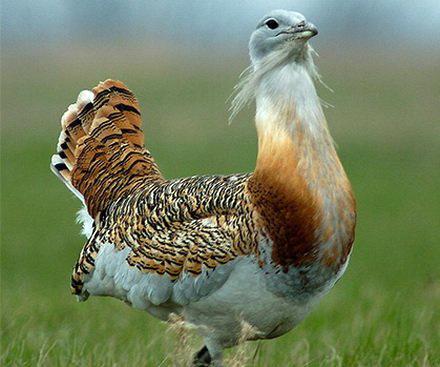
The heaviest of flying birds can be considered the bustard, whose habitat is the steppes of Eurasia. It can weigh up to 20 kg with a height of 110 cm. The bustard flies thanks to its ability to skillfully capture air currents, greatly aided by its wingspan of 190-250 cm. However, despite this, its take-off cannot be called an instant ascent upward; rather, it resembles the take-off of a heavy airliner.
9Bearded Vulture
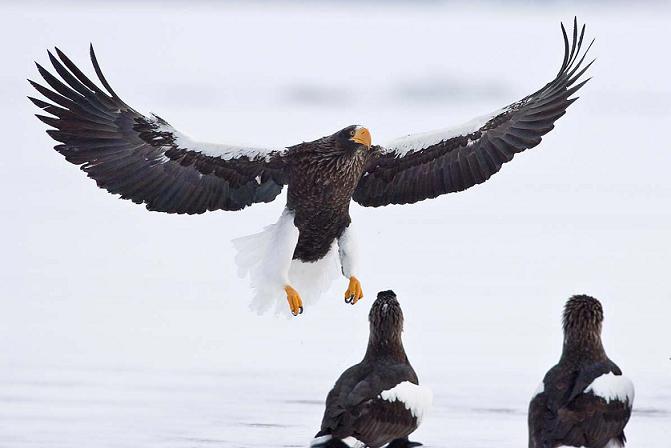
The wingspan of the bearded vulture reaches 2.5 meters, with a height of 105-110 cm and a weight of only 8-9 kg. This bird can only be found in the Russian Far East and is listed in the Red Book and protected by law because the population of this species has decreased to 7,500 individuals and is at risk of extinction.
10Emperor Penguin

The emperor penguin is the largest of the penguin family. Some individuals reach a height of 122 cm and weigh 40-45 kg. They live naturally in the ice of Antarctica, but this species occasionally swims to the mainland.
